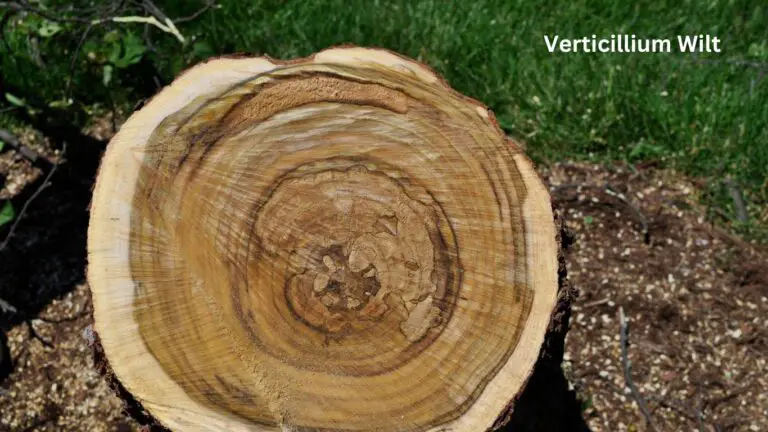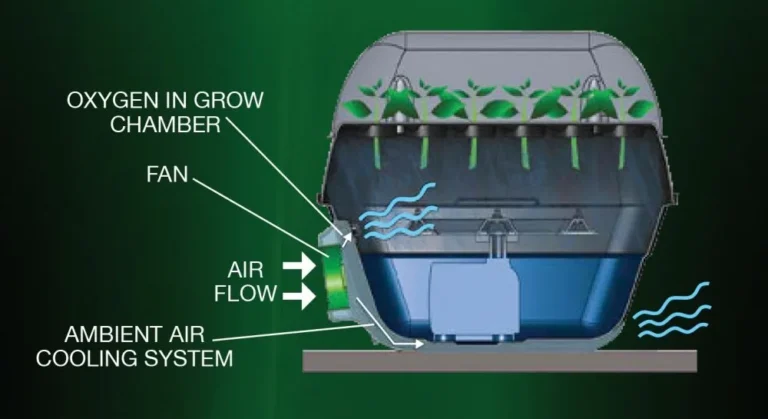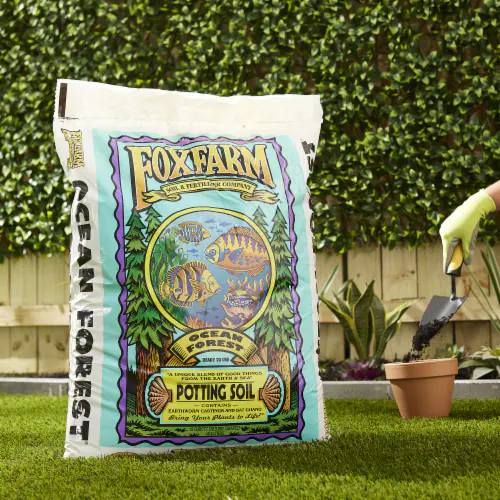Cat Deterrents for Garden Spaces
Table of Contents
Understanding the Root Cause of the cat deterrents Issue
It is essential to understand the root cause of the cat deterrents issue when it comes to addressing cat-related problems in gardens. By delving into the underlying factors that attract cats to outdoor spaces, we can develop effective strategies to deter them and protect our garden sanctuaries.
One of the primary reasons why cats find gardens enticing is the abundance of attractive stimuli. Their curious nature leads them to explore various scents, sounds, and sights that captivate their attention. Additionally, the presence of potential prey, such as birds or rodents, further piques their interest. Understanding these attraction factors enables us to tailor our interventions specifically to address these triggers and discourage cats from entering our gardens and causing disturbances.
By gaining a deeper understanding of why cats are drawn to gardens and identifying the factors that entice them, we can take proactive measures to create an environment that is less appealing to them. Through the implementation of effective strategies, we can minimize the presence of cats in our gardens and maintain the tranquility that we seek as garden enthusiasts.

Identifying the Attraction Factors for Cats in Gardens
Cats are often drawn to gardens due to various attraction factors. One of the primary reasons is the presence of wildlife, such as birds and rodents, which serve as potential prey for cats. The scent of these creatures, along with their movements and sounds, can captivate feline curiosity and drive them to explore garden spaces.
In addition, gardens that offer plenty of hiding spots and sheltered areas are highly appealing to cats. Dense shrubs, tall grasses, and overgrown vegetation create ideal hiding and hunting grounds for these creatures. Furthermore, if a garden has a reliable water source, like a pond or birdbath, it can attract cats seeking hydration or a dip on hot days.
Understanding these attraction factors is crucial in devising effective strategies to deter cats from gardens. By identifying the reasons behind their presence, gardeners can implement targeted solutions that address these specific factors and create an environment that discourages cats from frequenting the area.
Creating an Unwelcoming Environment for Cats
Creating an unwelcoming environment for cats is essential for preserving the integrity of your garden and protecting plants from damage. By employing effective strategies, you can deter these curious creatures and maintain a pristine outdoor space. One approach is to use visual repellents that disrupt the cats’ natural instincts and discourage them from entering your garden. Brightly colored pinwheels, reflective surfaces, or scarecrows can startle cats and discourage them from lingering in your garden.
Additionally, consider incorporating auditory repellents into your garden design. Ultrasonic devices emit high-frequency sounds that are inaudible to humans but are uncomfortable for cats, prompting them to avoid the area. These devices can be strategically placed throughout your garden to maximize their effectiveness in deterring cats. However, it’s important to regularly check and adjust their positions, as cats may eventually become desensitized to the sounds if left undisturbed.
Creating an unwelcoming environment for cats also involves using scent repellents. Cats have a keen sense of smell, and there are certain odors that they find particularly unpleasant. Sprinkling citrus peels or coffee grounds around your garden can help deter cats, as they dislike the strong scents associated with these substances. Additionally, some plants, such as lavender or rue, possess natural repellent qualities that discourage cats from approaching your garden. By strategically incorporating these plants into your landscape, you can naturally deter feline visitors.

Using Scent Repellents to Keep Cats Away
One effective method of deterring cats from your garden is by using scent repellents. Cats are naturally averse to certain smells, and incorporating these scents into your garden can help keep them at bay.
One popular scent repellent is citrus. Cats have a strong dislike for the smell of citrus fruits such as oranges and lemons. You can create a natural deterrent by placing citrus peels around your garden or using citrus-scented sprays. Alternatively, you can try planting citrus trees or shrubs in areas where you want to discourage cats from entering. The strong aroma of citrus can help create an unwelcome environment for cats, reducing their attraction to your garden.
Another scent that cats find unpleasant is lavender. This fragrant herb not only adds beauty to your garden but can also act as a natural repellent. Planting lavender near vulnerable areas such as beds or borders can deter cats from entering. You can also create lavender sachets or use lavender oil to spread the scent throughout your garden. The calming and sweet aroma of lavender may prove to be a powerful deterrent for cats, keeping them away from your cherished plants.
| Scent Repellent | Description |
|---|---|
| Citrus | Cats typically dislike the scent of citrus fruits such as oranges, lemons, and grapefruits. |
| Lavender | While humans enjoy the scent of lavender, cats tend to find it unpleasant and will avoid areas with this aroma. |
| Peppermint | The strong scent of peppermint can deter cats from entering treated areas, as they find it overpowering. |
| Rosemary | Similar to peppermint, the scent of rosemary is intense and can repel cats when used as a deterrent. |
| Eucalyptus | The menthol-like aroma of eucalyptus is disliked by cats, making it an effective repellent for outdoor areas. |
| Vinegar | Cats are known to dislike the smell of vinegar, so spraying a vinegar solution around gardens or furniture can help deter them. |
Using these scent repellents strategically around your home or garden can help keep cats away from areas where they are not welcome.
Exploring Ultrasonic Devices as a Cat Deterrent
Ultrasonic devices have gained popularity as a means of deterring cats from gardens and outdoor spaces. These devices emit high-frequency sounds that are inaudible to humans but uncomfortable for cats, acting as a deterrent to keep them away. The idea behind ultrasonic devices is that cats, who have sensitive hearing, will find the noise unpleasant and will learn to associate the discomfort with the garden, ultimately avoiding it altogether.
While ultrasonic devices may seem like an effective solution, their efficacy in deterring cats is still a topic of debate among experts. Some studies have shown positive results, indicating that cats are indeed deterred by the high-pitched sounds. However, other studies suggest that cats may become habituated to the sound over time, rendering the devices less effective. Additionally, the effectiveness of these devices may vary depending on individual cats and the specific environment in which they are used. It is important to consider these factors and weigh the potential benefits against the cost when deciding whether to invest in ultrasonic devices as a cat deterrent in your garden.
| Aspect | Description |
|---|---|
| How It Works | Ultrasonic devices emit high-frequency sound waves that are unpleasant to cats, causing discomfort and deterring them from entering the treated area. |
| Range | The effective range of ultrasonic devices varies depending on the model, but typically covers an area of up to 30 feet or more. |
| Installation | Ultrasonic devices are usually easy to install and can be placed in gardens, around patios, or near areas where cats are not wanted. Some models may require mounting on walls or fences, while others are designed for ground-level placement. |
| Effectiveness | Ultrasonic devices can be effective at deterring cats when used correctly. However, their effectiveness may vary depending on factors such as the cat’s sensitivity to sound, environmental conditions, and the presence of obstacles that may block the sound waves. |
| Safety | Ultrasonic devices are generally safe for use around humans and pets other than cats. They emit sounds that are inaudible to humans and most other animals. However, it’s essential to follow the manufacturer’s instructions regarding placement and usage to avoid potential harm to pets or wildlife. |
| Power Source | Ultrasonic devices are typically powered by batteries or electricity. Battery-powered models offer flexibility in placement but may require frequent battery changes. Electric models may require access to a power source but offer continuous operation. |
When considering ultrasonic devices as a cat deterrent, it’s essential to choose a model that suits your specific needs and preferences and to use it in conjunction with other deterrent methods for maximum effectiveness.
Utilizing Motion-Activated Sprinklers for Cat Repellent
Motion-activated sprinklers have proven to be an effective and humane way to repel cats from gardens and outdoor areas. These innovative devices are equipped with motion sensors that detect any movement within their range. As soon as a cat enters the protected area, the sprinklers activate and release a gentle yet startling burst of water, startling the feline and encouraging it to find a more welcoming place to roam.
The key advantage of utilizing motion-activated sprinklers is their ability to deter cats without causing any harm. Unlike other cat deterrent methods that involve physical barriers or chemical repellents, these sprinklers provide a non-aggressive deterrent that does not cause any pain or distress to the animal. This makes them a popular choice for gardeners who prioritize both their plants’ well-being and the welfare of neighborhood cats. Additionally, motion-activated sprinklers are environmentally friendly, using water as the repellent instead of harmful chemicals that can harm the environment or other animals. By incorporating motion-activated sprinklers into garden design, homeowners can enjoy their outdoor spaces while providing a safe and cat-free environment for their plants.

Physical Barriers: Fencing and Netting Solutions
Fencing and netting are effective physical barriers that can help keep cats out of your garden. By restricting their access, you can protect your plants and maintain the aesthetic appeal of your outdoor space. Fences can be made of various materials such as wood, metal, or PVC, and their height is an important consideration. A fence that is at least six feet tall is generally recommended to prevent cats from jumping over. In addition, ensure that the fence is buried at least six inches into the ground to discourage cats from digging underneath.
Netting is another option for creating a barrier, particularly for areas where aesthetics are a concern. It can be draped over plants or secured around garden beds to prevent cats from accessing specific areas. One advantage of netting is that it allows for sunlight, water, and air to reach the plants while still providing an effective deterrent for cats. However, be sure to choose netting with small enough holes to prevent cats from getting their claws or paws caught.
Both fencing and netting solutions require careful consideration of the layout and design of your garden. It is crucial to ensure that the barriers are properly installed and maintained to effectively deter cats and protect your plants.

Implementing Plant Selection Strategies to Discourage Cats
When it comes to discouraging cats from entering your garden, selecting the right plants can play a crucial role. Certain types of plants carry scents or textures that cats find unappealing, which can help keep them at bay. By implementing plant selection strategies that target these preferences, you can create a garden environment that is less attractive to cats.
One effective plant selection strategy is to incorporate plants with strong odors that cats dislike. For example, herbs such as lavender, rosemary, and rue emit scents that cats typically find repulsive. These plants not only add fragrance to your garden but also serve as natural deterrents for cats. In addition, incorporating plants like lemongrass, pennyroyal, and citronella can help repel cats with their strong citrus-like aromas. By strategically placing these plants throughout your garden, you can create an olfactory barrier that discourages cats from entering and exploring your precious green space.
Utilizing Natural Repellents and Deterrent Plants
Natural repellents and deterrent plants can be an effective solution for keeping cats out of your garden. These methods utilize the power of scent and plant characteristics to discourage cats from entering and causing damage to your plants. By strategically placing these natural deterrents throughout your garden, you can create an unattractive environment for cats, reducing their presence significantly.
One natural repellent that is commonly used is citrus. The strong scent of oranges, lemons, and grapefruits can repel cats and keep them away from your garden. Simply scatter citrus peels or spray a citrus-based repellent around the perimeter of your garden to create a barrier that cats will want to avoid. Additionally, plants with strong smells, such as lavender, rosemary, and rue, can also deter cats. These plants release fragrances that cats find unpleasant, making them less likely to venture into your garden.
Enhancing Garden Design to Minimize Cat Attraction
When designing a garden to minimize cat attraction, it is important to consider certain elements that can deter cats from entering the space. One effective strategy is to incorporate plants that cats dislike. For instance, cats tend to avoid plants with strong scents such as lavender, rosemary, or marigolds. Including these plants in your garden design not only adds visual appeal, but also acts as a natural deterrent for cats.
Another aspect to consider when enhancing garden design is the layout and structure of the space. Cats are less likely to enter a garden that is open and exposed, as they prefer areas with hiding spots and cover. By creating a garden with less hiding places, such as reducing dense vegetation or using low-growing plants, you can discourage cats from exploring and taking up residence in your garden. Additionally, installing fencing or netting around the perimeter of your garden can physically prevent cats from entering, further minimizing their attraction to the space.

Exploring Water-based Deterrents for Cat Repellent
Water-based deterrents can be an effective solution for preventing cats from entering and causing damage to your garden. These deterrents typically work by emitting a spray of water whenever a motion sensor detects the presence of a cat. The sudden burst of water startles the feline, and over time, they learn to associate your garden with this unpleasant experience, deterring them from returning.
One popular example of a water-based deterrent is the motion-activated sprinkler system. These devices can be strategically placed throughout your garden, ensuring thorough coverage. When a cat crosses the motion sensor’s path, the sprinkler system is triggered, releasing a burst of water that startles and redirects the animal. The advantage of using water-based deterrents is that they are humane and do not cause harm to cats.
Understanding the Role of Noise in Deterring Cats
Noise can be a powerful deterrent when it comes to keeping cats out of your garden. Cats rely heavily on their keen sense of hearing, and certain noises can be highly irritating and uncomfortable for them. High-pitched frequencies, in particular, are known to be effective in deterring cats.
One option to consider is the use of ultrasonic devices. These devices emit high-frequency sounds that are inaudible to humans but highly disturbing to cats. When placed strategically in your garden, these devices can effectively deter cats and keep them away from your precious plants. It’s important to ensure that the ultrasonic devices you choose are specifically designed for cat deterrence, as not all ultrasonic devices on the market are created equal.
Another noise-based deterrent that can be effective is the use of motion-activated sprinklers. These devices are equipped with sensors that detect the presence of cats in your garden. Once a cat is detected, the sprinklers activate, releasing a sudden burst of water accompanied by a noise. This sudden surprise can startle and frighten cats, dissuading them from returning to your garden again. Just be sure to position the motion-activated sprinklers in areas where cats are most likely to enter your garden, such as along boundaries or near favorite resting spots.
By harnessing the power of noise, you can create an environment that is unwelcoming and unappealing to cats. Incorporating these noise-based deterrent strategies into your garden can help you maintain the beauty of your plants and keep pesky feline intruders at bay. However, it’s important to remember that every cat is unique, and what may deter one cat may not work for another. It may be necessary to experiment with different noise-based deterrents to find the most effective solution for your specific situation.
Avoiding Food Sources in the Garden to Discourage Cats
When it comes to keeping cats out of your garden, one crucial step is to avoid providing them with any food sources. Cats are skilled hunters and opportunistic feeders, so removing potential food sources can greatly discourage their presence in your garden.
Firstly, make sure to securely store any pet food or birdseed. Leaving these items out in the open can attract cats and potentially lead them to linger in your garden. Keep them in tightly sealed containers or in areas where cats cannot access them. Additionally, avoid leaving any food scraps or leftovers outside, as these can also entice cats to visit your garden.
Furthermore, if you have fruit trees or vegetable plants in your garden, take care to promptly harvest any ripe produce. Cats are attracted to the scent of fresh fruits and vegetables, and leaving them on the ground can serve as an invitation for feline visitors. By removing these food sources, you significantly reduce the appeal of your garden to cats, making it less likely for them to return.

Implementing Proper Waste Management in Garden Spaces
Proper waste management is crucial in maintaining a clean and healthy garden space. Not only does it contribute to the overall aesthetics of the area, but it also plays a significant role in deterring cats from frequenting your garden. By implementing effective waste management practices, you can create an environment that is less appealing to these furry intruders.
One of the key steps in waste management is ensuring that all organic waste, such as food scraps and garden clippings, are properly disposed of. Avoid leaving them exposed in the garden, as this can attract cats looking for a potential food source. Instead, consider composting these materials in a designated compost bin or pile. Composting not only helps eliminate unwanted odors but also provides a beneficial nutrient-rich soil amendment for your garden. By removing the allure of food, you significantly reduce the likelihood of attracting cats to your garden space.
Exploring Cat Repellent Sprays and Granules
Cat repellent sprays and granules are popular options for deterring cats from gardens and outdoor spaces. These products work by emitting odors that cats find unpleasant, thus encouraging them to avoid the treated areas. Many cat repellents are formulated with natural ingredients such as citrus oils, garlic, or pepper, which have been found to be effective in repelling cats.
When using cat repellent sprays, it’s important to follow the instructions provided by the manufacturer. Typically, these sprays need to be applied to specific surfaces or areas where cats tend to frequent, such as plants, soil, or furniture. Some sprays may require regular reapplication, especially after rain or heavy watering.
Granules, on the other hand, are designed to be spread across larger areas, such as lawns or flower beds. These granules release their odors slowly, providing long-lasting protection against cats. It’s important to ensure that the granules are evenly spread across the desired area for maximum effectiveness.
While cat repellent sprays and granules can be effective in deterring cats, it’s worth noting that individual cats may have different preferences when it comes to scents. Therefore, it may be necessary to experiment with different products or combinations of repellents to find the most effective solution for your specific needs.
In the next section, we will explore alternatives to sprays and granules, such as electronic deterrents and physical barriers, which can provide additional layers of protection against cats in your garden. Stay tuned for expert advice and practical tips on creating an unwelcoming environment for cats.
Seeking Professional Help for Persistent Cat Issues.
When faced with persistent cat issues in your garden, seeking professional help can be a valuable step towards finding a long-term solution. Professional cat deterrent services have the expertise and experience to assess the root causes of the problem and implement effective strategies tailored to your specific needs.
One of the key advantages of consulting a professional is their ability to accurately identify and understand the underlying reasons behind cat attraction to your garden. They can conduct a thorough evaluation, taking into consideration factors such as local cat populations, nearby food sources, and environmental conditions that may contribute to the presence of cats. By pinpointing these attraction factors, professionals can provide targeted solutions to mitigate them, reducing the likelihood of cats being drawn to your garden in the first place.
In addition, professional cat deterrent services can deploy a range of effective and safe methods to deter cats from your garden. They may utilize a combination of ultrasonic devices, motion-activated sprinklers, and scent repellents that have been proven to discourage cats without causing them harm. With their knowledge of cat behavior and effective deterrent techniques, these professionals can help create an environment that cats find unappealing, encouraging them to seek alternative spaces away from your garden.
Taking the step to seek professional help for persistent cat issues demonstrates your commitment to finding a sustainable solution. By leveraging their expertise and experience, you can regain control of your garden and enjoy its beauty without the daily frustrations of cat-related damage.
How can I determine the root cause of persistent cat issues in my garden?
Understanding the root cause of the issue may require observation and analysis of the cat’s behavior, such as identifying their preferred areas and entry points into the garden.
Are there specific factors that attract cats to gardens?
Yes, cats are attracted to gardens for various reasons, including the presence of other animals, availability of food sources, comfortable hiding spots, and favorable soil for digging.
What can I do to create an unwelcoming environment for cats in my garden?
Creating an unwelcoming environment can involve removing sheltered spots, covering loose soil, and blocking access to hiding places like dense shrubs or under decks.
Are there any scent repellents that effectively keep cats away?
Yes, certain scents like citrus, lavender, or vinegar can deter cats from entering your garden. These scents can be applied to specific areas or sprayed around the garden perimeter.
How do ultrasonic devices work as a cat deterrent?
Ultrasonic devices emit high-frequency sounds that are unpleasant to cats but inaudible to humans. These devices can be placed in the garden to discourage cats from entering the area.
Can motion-activated sprinklers be effective in repelling cats?
Yes, motion-activated sprinklers are designed to activate when they detect movement, effectively startling and deterring cats from entering the garden.
What are some physical barriers I can use to keep cats out of my garden?
Fencing and netting solutions, such as chicken wire or mesh netting, can be installed to create a physical barrier that prevents cats from accessing your garden.
How can plant selection discourage cats from entering the garden?
Certain plants, like thorny or prickly varieties, can deter cats from entering your garden as they dislike the texture or sensation of these plants.
Are there any natural repellents or deterrent plants that can keep cats away?
Yes, plants like rue, coleus canina, or lavender can act as natural repellents due to their strong scents or textures that cats find unpleasant.
How can enhancing garden design minimize cat attraction?
Minimizing open, inviting spaces in the garden and incorporating features such as raised beds or trellises can discourage cats from entering and exploring the area.
Can water-based deterrents effectively repel cats from the garden?
Yes, water-based deterrents, such as motion-activated sprinklers or water spray devices, can startle and discourage cats from entering your garden.
Does noise play a role in deterring cats from gardens?
Yes, certain noises like wind chimes, ultrasonic devices, or even clapping hands can startle cats and deter them from entering the garden.
How can avoiding food sources in the garden discourage cats?
By removing or securely covering any potential food sources in the garden, such as bird feeders or open trash cans, cats are less likely to be attracted to the area.
Why is proper waste management important in preventing cat issues in gardens?
Proper waste management reduces the availability of food sources for cats, as well as eliminating any scents that may attract them to the garden.
Are there any cat repellent sprays or granules available in the market?
Yes, there are commercially available cat repellent sprays and granules that can be applied to specific areas of the garden to deter cats from entering.
When should I consider seeking professional help for persistent cat issues?
If you have tried various deterrent methods and are still experiencing persistent cat issues in your garden, it may be beneficial to seek professional advice from a pest control expert or animal behaviorist.

Beck Wakeford is a dedicated writer at SouthElMonteHydroponics, with a fervent enthusiasm for agriculture and technological innovation. Armed with a degree in Agricultural Engineering from a leading university, Beck specializes in hydroponic systems design, automation, and optimization. Their passion for merging traditional farming with cutting-edge technology drives them to explore novel solutions for sustainable food production. Beck’s expertise and keen interest in the intersection of engineering and agriculture make them a valuable asset in the quest for efficient and eco-friendly farming practices. Through their writing, Beck aims to inspire others to embrace the potential of hydroponics in shaping a more sustainable future.






